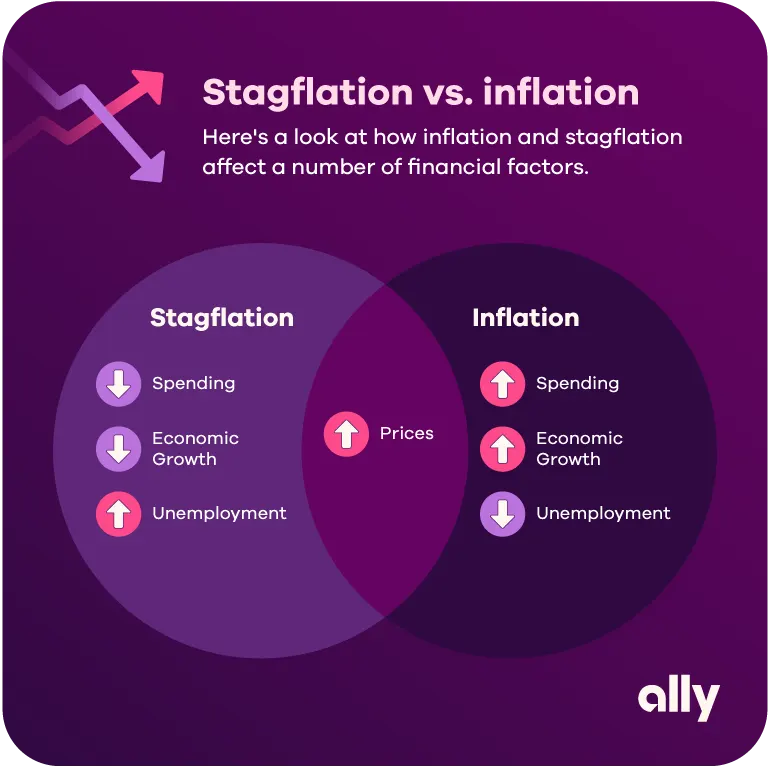Understanding different economic concepts can help you feel more confident when managing your investments during changing market cycles. Inflation and its distant cousin stagflation are two common terms you might encounter.
What is inflation?
Inflation is an increase in the price of consumer goods and services over time. The Bureau of Labor Statistics (BLS) uses the Consumer Price Index (CPI) to track the rate of inflation. The CPI measures the average change of prices over time that you pay for a variety of goods and services, including things like gas, food and housing.
Rising inflation can happen when growth in the money supply outpaces an economy's ability to produce goods and services. If this happens, there are three forms inflation can take.
Demand-pull inflation: The most common type of inflation, demand-pull inflation occurs when the demand for goods or services outweighs the supply, which pushes prices up for what’s available.
Cost-push inflation: This occurs when it costs companies more money to produce the same goods and services, and they pass those expenses on to consumers in the form of higher prices.
Built-in inflation: Built-in inflation is an expectation-driven phenomenon. This type of inflation can happen when businesses or workers assume that prices will rise sometime in the near future.
What is stagflation?
Stagflation is the combination of slowing economic growth, high inflation and a high unemployment rate. When stagflation sets in, consumer spending slows down. Higher prices may continue, even when demand slows and you’re purchasing fewer goods and services. This can cause a downward spiral, leading to economic activity slowing even more.
In a worst-case scenario, stagflation can lead to runaway inflation known as hyperinflation, which is a form of high, accelerating inflation when the cost of goods and services rises more than 50% per month.

Investing during stagflation
Stagflation is less common than inflation, but paying attention to inflationary movements can give you an idea of whether stagflation may be around the corner.
Look for value
When the economy slows down, considering value stocks over growth stocks could make sense. Growth stocks are generally considered a no-go during stagflation since rising prices can erode the future value of company profits. Stocks, like most assets, tend to be more volatile in times of inflation or stagflation.
When the economy slows down, considering value stocks over growth stocks could make sense.
Stick with the basics
Some investors like to invest in commodities or companies that produce raw materials during stagflation. Companies that produce materials needed to manufacture other goods are the price-setters, so there’s the possibility they may be more protected against market volatility when supply and demand gets out of balance.
Read more: 4 investing strategies to help hedge against inflation
Don't let stagflation or inflation derail your portfolio.
Inflation and stagflation can be unpleasant to deal with as a consumer and an investor. The most important thing is to stick to your goals and risk tolerance, and to avoid letting your emotions take charge of your investing decisions.


